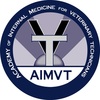Large Animal Internal Medicine
Large Animal Internal Medicine is defined as the specialty branch of veterinary medicine concerned with the study, care and treatment of medical and surgical diseases in large animals. All specialties of AIMVT are further defined to include the advanced knowledge of wellness and preventative medicine, a detailed knowledge of complex, acute and chronic disease states, and a thorough knowledge of the anatomy, pathology and pathophysiology of animals.Veterinary technicians interested in the Large Animal Internal Medicine specialty should possess the following skills:
Large Animal Internal Medicine is defined as the specialty branch of veterinary medicine concerned with the study, care and treatment of medical and surgical diseases in large animals. All specialties of AIMVT are further defined to include the advanced knowledge of wellness and preventative medicine, a detailed knowledge of complex, acute and chronic disease states, and a thorough knowledge of the anatomy, pathology and pathophysiology of animals.Veterinary technicians interested in the Large Animal Internal Medicine specialty should possess the following skills:
- The ability to take a complete a history, perform a physical examination, triage, and to treat and monitor both emergent and non-emergent conditions.
- Knowledge of multiple disease processes and their effects on various body system functions: neuromuscular, cardiovascular, musculoskeletal, hepatic, renal, urogenital, reproductive, dermatologic, and respiratory.
- Nursing care for the potential issues listed above.
- The care and management of neonates: Failure of passive transfer, congenital anomalies, genetic disorders, premature birth, sepsis, dysmature birth and the nursing care needed for each. The care and management of periparturient dams: dystocia, premature birth, abortion, reabsorption, parturition, birthing problems, gestation length, and stages of labor.
- Knowledge of various diagnostic procedures and the equipment necessary to perform them: ultrasonography, endoscopy, electrocardiography, various biopsies (needle and punch), tracheal wash, bronchoalveolar lavage, intravenous and urinary catheterization, abdominocentesis, thoracocentesis, pericardiocentesis, bone marrow aspirations, and CSF tap to name a few.
- Knowledge of various imaging and treatment modalities, general and advanced techniques: Flat films, enhanced studies, ultrasonography, CT, MRI, nuclear scintigraphy, and fluoroscopy and the linear accelerator.
- Knowledge of laboratory procedures: CBC, Serum Chemistries, serology, histology, virology, toxicology, bacteriology, urinalysis, fecal, acid-base, and cytology using gram stain, wrights stain, and dif-quick stain to name a few.
- General knowledge of and ability to perform local, regional and general anesthesia on multiple large animal species. Pain detection, intervention and management.
- Broad knowledge of pharmaceuticals, therapeutics, biologicals, parasite control, biosecurity and nutrition issues including meat and milk withdrawal indications.
- Zoonosis.
- Client communication and education.
